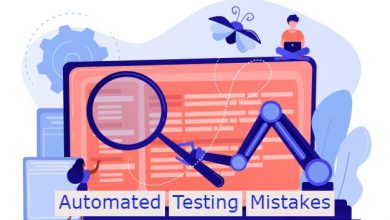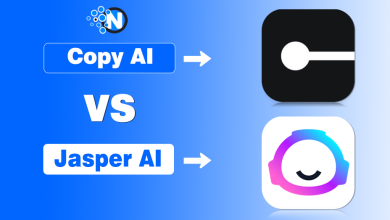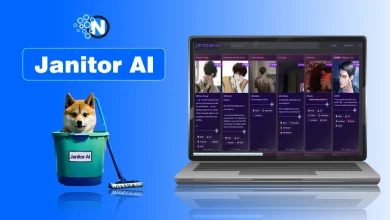What Makes ChatGPT Choose Your Content for Citations? – Insights from Wellows.com

What if ChatGPT started acting like your smartest user, pulling citations from content not because it was published on a high-traffic site, but because it was the best answer?
A recent Wellows Insights report, authored by founder and CEO Masab Gadit, reveals that nearly half (48%) of all citations are concentrated among the top 50 domains.
Meanwhile, the remaining 52% are distributed across countless long-tail sites, demonstrating that niche expertise can hold its own against established domain authorities.
In this post, we’ll unpack how citation-worthiness is viewed by AI systems like ChatGPT, what makes certain content stand out, and how you can shape your strategy to increase the chances of being cited.
Why ChatGPT Trusts Certain Sources: Exploring the Core Criteria Behind AI Citations
Being cited isn’t about brand size or domain authority alone, it’s about clarity, transparency, and value. When ChatGPT references content, it’s usually because it finds the information to be clear, trustworthy, and directly useful in answering a question.
The key factors influencing citation selection include:
- Verifiable Authorship – Is the content attributes to a person or organization?
- Persistent Access – Is the source publicly available and easy to find?
- Clarity of Purpose – Does the content deliver what the headline or summary promises?
These elements show whether the content feels reliable enough to quote, even without traditional search engine signals.
Why Some Content Gets Picked and Others Don’t
ChatGPT doesn’t maintain a static list of sources. It references content based on patterns, prominence, and structure. In prompts that explicitly request a citation, users tend to prefer content with clear formatting and visible trust signals.
Here are a few content traits that consistently show up in citations:
- Named authors or organizations
- A visible publish or update date
- Structured formatting (like headings and bullets)
- Statements backed by external references or factual clarity
- Pages hosted on established or well-optimized websites
These qualities make it easier for the model to identify and extract useful content that aligns with the user’s query.
How to Make Your Content More Likely to Be Cited
Whether you aim to boost brand visibility or build authority, certain on-page elements significantly increase your chances of earning references.

1. Use Real Author Names
Citations tend to favor content that’s published under a name. Make sure to publish content under real author names. This signals authenticity and accountability. You can get bonus points if that name links to a public profile or company bio.
💡Pro Tip: Include an author section with credentials, quotes, or a short background. This also increases human trust.
2. Include Dates That Show Relevance
When someone searches for “best strategies for 2025,” ChatGPT looks for content that reflects current information. Including visible dates either in the title, metadata, or header makes a difference.
Pro Tip: Include an author section with credentials, quotes, or a short background. This also increases human trust.
3. Format for Scannability
Well-structured content performs better across the board. Your content should be easily scannable for AI tools to extract most relevant and accurate information required. That means using headings, bullet lists, summaries, and tables for better content organization.
💡Pro Tip: Use H2 and H3 subheadings for clear sections. Add summaries or key takeaways at the end.
4. Back Up Claims with References
Include statistics or bold claims, and link to the original source whenever you mention some details or information from other sources. This increases trust and makes your content easier to validate, two factors that influence citation behavior.
💡Pro Tip: Link to official publications, research studies, or trusted industry sites.
How Citation Preferences Differ
Citation logic can vary between humans and AI-generated systems. Understanding the difference helps you optimize your content for both:
| Feature | Human Approach | ChatGPT-Like System |
|---|---|---|
| Source Selection | Known publishers, familiar brands | Structured, relevant, accessible content |
| Goal | Support a point, provide background | Answer the prompt as clearly as possible |
| Citation Format | Author, title, year, publication | Inline link or named source (when prompted) |
Checklist: How to Improve Citation Potential
Before hitting publish, run your content through this simple checklist:
- Real author name with profile or credentials
- Clear, recent publish or update date
- Structured layout with headings and bullets
- External links to reputable sources
- Straightforward, focused writing
- Content aligned with real user questions
These aren’t just best practices – they directly increase the chances that your content will appear in citations, summaries, or recommendations.
Final Thoughts:
ChatGPT or any AI tool cites you not just for writing good content, but for creating valuable and relevant material. It’s about writing strategic, optimized, and user-friendly content that’s easy for both search engines and AI systems to understand and trust.
Systems like ChatGPT don’t prioritize size or brand, they prioritize clarity, relevance, and credibility.
If your content clearly answers a question, offers reliable information, and is easy to reference, a person or a machine is far more likely to surface it.




